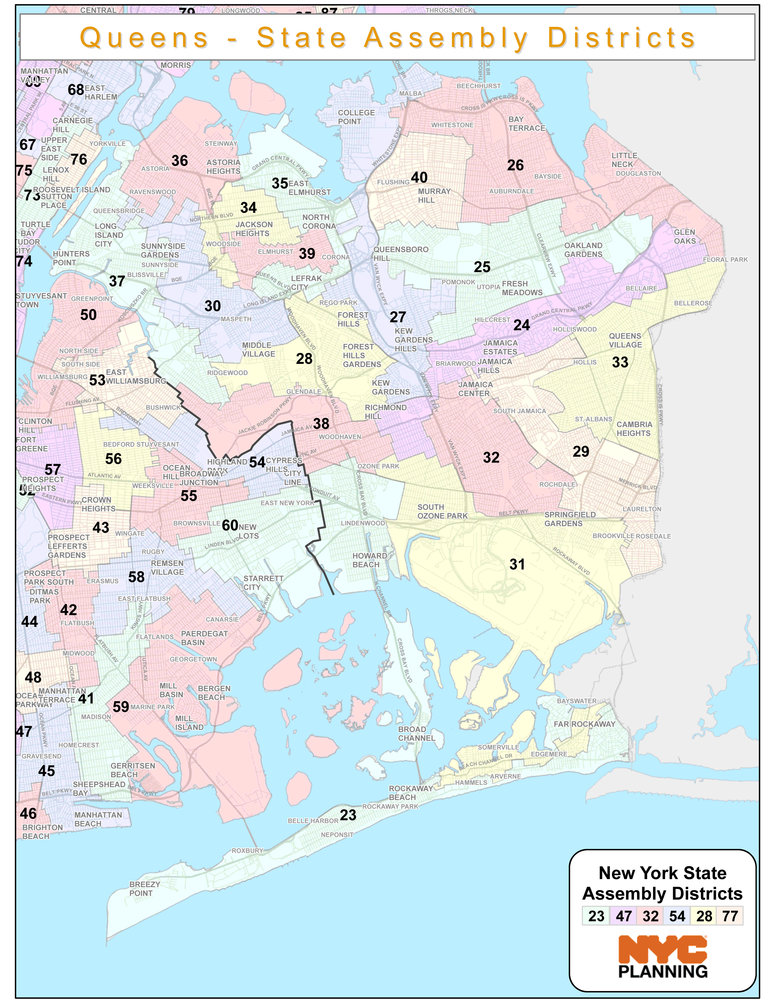Fixes and changes to BQE finally announced
After years of discussion and studies, Mayor Bill de Blasio and the Department of Transportation (DOT) finally announced a comprehensive plan to repair and modify the Brooklyn-Queens Expressway (BQE).
The four-part plan is particularly focused on reducing truck traffic and pollution, and is designed to preserve and improve elevated sections of the roadway for at least another 20 years.
“We have the technology, the ideas, and the expertise to save the BQE, and we’re excited to execute this plan, but that’s just the start,” de Blasio said in a statement last week. “New York City can do more than patch up a highway in need of repair, we can use this opportunity to rethink how people, goods, and services move around our city.”
Calls for a new BQE master plan have been in circulation for decades now. In 2019, a group of politicians led by Comptroller Scott Stringer penned an open letter to the Mayor demanding more action on the issue.
“Today’s announcement to scale back the BQE, as I have long advocated, is a positive first step toward ending the harmful legacy of this roadway and finally creating the flexibility and space to comprehensively reimagine a pedestrian-friendly transit and infrastructure network for the future,” said Comptroller Scott Stringer.
In early 2020, the city organized a special panel to research potential solutions, during which transportation experts suggested measures to lessen the weight of vehicles, specifically trucks, travelling on the BQE.
The panel focused primarily on preserving crumbling sections in Downtown Brooklyn and South Brooklyn.
The mayor’s announcement last week finally made these suggestions a reality. Starting this year, the city will implement “weigh-in-motion” technology that will monitor the weight of trucks travelling on the decaying expressway.
Additionally, the NYPD will increase weight enforcement to further protect vulnerable sections of the BQE cantilever.
On a specifically problematic half-mile of road between Atlantic Avenue and the Brooklyn Bridge, DOT plans on shifting lane markers down from three to two in both directions to alleviate weight. Work on these lane changes will commence on August 30.
Along the entire stretch of the BQE, the DOT will implement new water filtration systems to avoid further water damage.
In addition to changes on the BQE itself, the mayor urged the city to invest in alternative forms of freight transportation to lessen the burden placed on the elevated roadway. De Blasio has instructed city agencies to research supply chain solutions, including incentivised off-hour deliveries, freight consolidation, rail and boat transportation, and cargo bike deliveries.
For longtime advocates of a BQE redesign, last week’s news was cause for celebration.
“Extending the useful life of the Brooklyn-Queens Expressway, while ensuring the safety of drivers and passengers of vehicles that use the roadway, will allow time for the city, state, and federal governments to develop a long-term approach to this critical route that reflects New York’s evolving transportation needs and better serves the communities along the BQE corridor,” said State Senator Brian Kavanaugh, who has been pushing for BQE renovations for close to a decade.
The Cobble Hill Association has pushed for changes to the roadway for years, thanks in part to memories of the area’s partial destruction in the mid-20th century to make way for the roadway. Neighborhoods throughout Brooklyn were torn asunder to facilitate the construction of the BQE, displacing large numbers of Norwegian and Italian immigrants in Sunset Park, Bay Ridge, and beyond.
“Across the nation, the destructive effects of urban highways are being recognized and addressed,” a spokesperson from the Cobble Hill Association said. “The transformation of the BQE, one of New York City’s most decrepit and polluting transportation corridors, is of critical importance to the future of our city.
“The planning to reverse the negative environmental, economic, and public health impacts of the BQE must begin now, and we will hold the city to its commitment to move forward immediately,” they added. “The mayor’s announcement is an important step in the right direction.”







